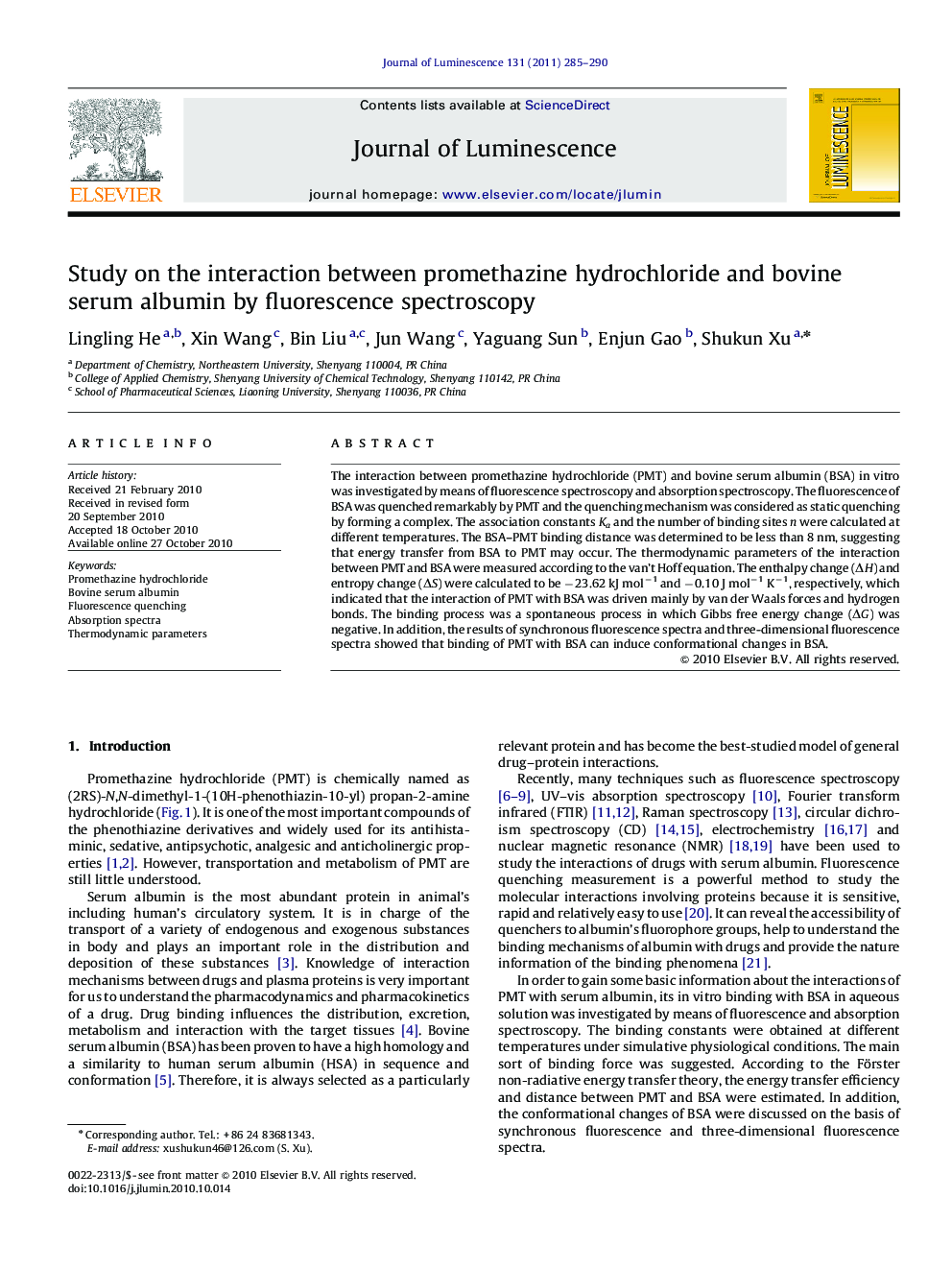| Article ID | Journal | Published Year | Pages | File Type |
|---|---|---|---|---|
| 5402194 | Journal of Luminescence | 2011 | 6 Pages |
Abstract
The interaction between promethazine hydrochloride (PMT) and bovine serum albumin (BSA) in vitro was investigated by means of fluorescence spectroscopy and absorption spectroscopy. The fluorescence of BSA was quenched remarkably by PMT and the quenching mechanism was considered as static quenching by forming a complex. The association constants Ka and the number of binding sites n were calculated at different temperatures. The BSA-PMT binding distance was determined to be less than 8Â nm, suggesting that energy transfer from BSA to PMT may occur. The thermodynamic parameters of the interaction between PMT and BSA were measured according to the van't Hoff equation. The enthalpy change (ÎH) and entropy change (ÎS) were calculated to be â23.62Â kJÂ molâ1 and â0.10Â JÂ molâ1Â Kâ1, respectively, which indicated that the interaction of PMT with BSA was driven mainly by van der Waals forces and hydrogen bonds. The binding process was a spontaneous process in which Gibbs free energy change (ÎG) was negative. In addition, the results of synchronous fluorescence spectra and three-dimensional fluorescence spectra showed that binding of PMT with BSA can induce conformational changes in BSA.
Keywords
Related Topics
Physical Sciences and Engineering
Chemistry
Physical and Theoretical Chemistry
Authors
Lingling He, Xin Wang, Bin Liu, Jun Wang, Yaguang Sun, Enjun Gao, Shukun Xu,
